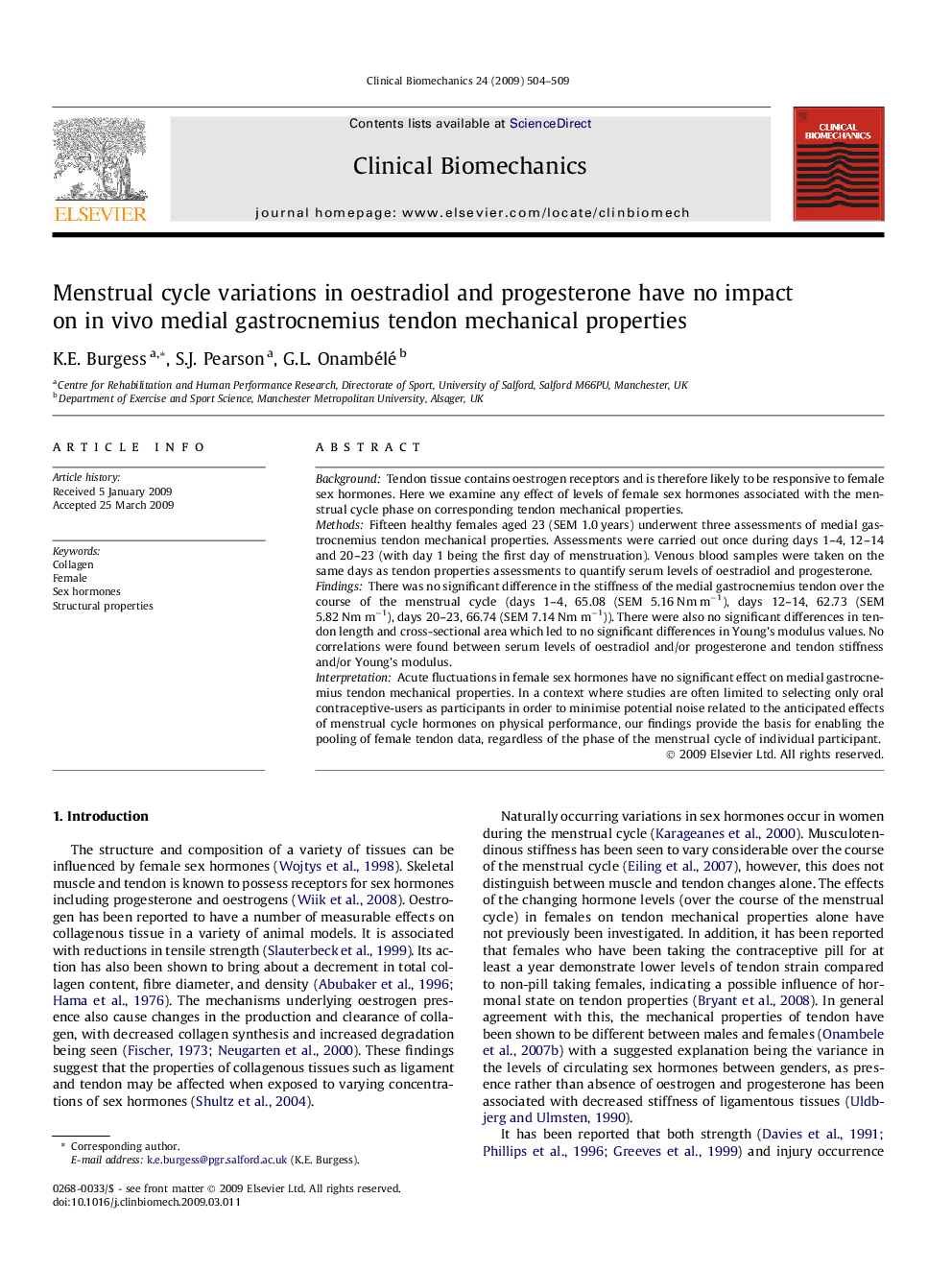| Article ID | Journal | Published Year | Pages | File Type |
|---|---|---|---|---|
| 4050763 | Clinical Biomechanics | 2009 | 6 Pages |
BackgroundTendon tissue contains oestrogen receptors and is therefore likely to be responsive to female sex hormones. Here we examine any effect of levels of female sex hormones associated with the menstrual cycle phase on corresponding tendon mechanical properties.MethodsFifteen healthy females aged 23 (SEM 1.0 years) underwent three assessments of medial gastrocnemius tendon mechanical properties. Assessments were carried out once during days 1–4, 12–14 and 20–23 (with day 1 being the first day of menstruation). Venous blood samples were taken on the same days as tendon properties assessments to quantify serum levels of oestradiol and progesterone.FindingsThere was no significant difference in the stiffness of the medial gastrocnemius tendon over the course of the menstrual cycle (days 1–4, 65.08 (SEM 5.16 Nm m−1), days 12–14, 62.73 (SEM 5.82 Nm m−1), days 20–23, 66.74 (SEM 7.14 Nm m−1)). There were also no significant differences in tendon length and cross-sectional area which led to no significant differences in Young’s modulus values. No correlations were found between serum levels of oestradiol and/or progesterone and tendon stiffness and/or Young’s modulus.InterpretationAcute fluctuations in female sex hormones have no significant effect on medial gastrocnemius tendon mechanical properties. In a context where studies are often limited to selecting only oral contraceptive-users as participants in order to minimise potential noise related to the anticipated effects of menstrual cycle hormones on physical performance, our findings provide the basis for enabling the pooling of female tendon data, regardless of the phase of the menstrual cycle of individual participant.
